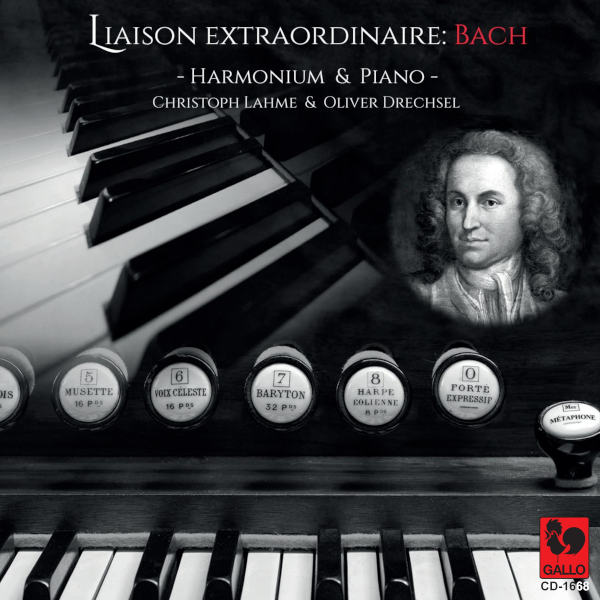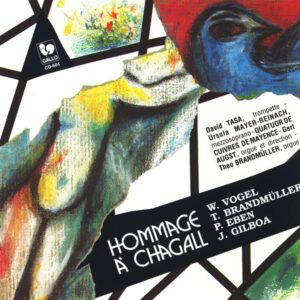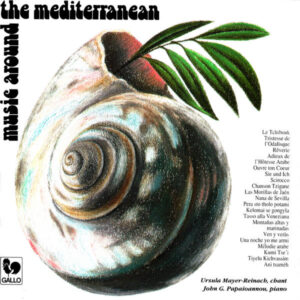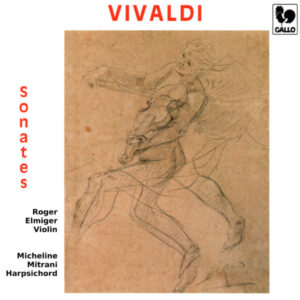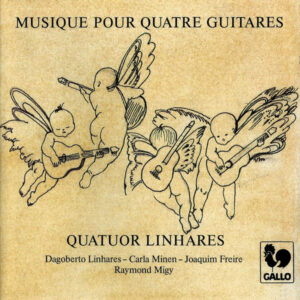Extraits / Excerpts
Bach: Liaison Extraordinaire for Harmonium-Piano duo - Christoph Lahme - Oliver Drechsel
Johann Sebastian BACH: Wachet auf, ruft uns die Stimme, BWV 645 (Arr. By C. Lahme) – Concerto No. 5 in F Minor, BWV 1056 (Arr. By C. Lahme) – Schafe können sicher weiden, BWV 208 (Arr. By C. Lahme) – Concerto for 2 Keyboards in C Minor, BWV 1062: II. Andante e piano (Arr. By C. Lahme) – Violin Sonata No. 5 in C Major, BWV 1005: II. Fuga (Arr. by A. Reinhard) – Charles GOUNOD: Méditation (Ave Maria) after Praeludium in C Major, BWV 846 (Arr. by J. Scott) – Franz POENITZ: Méditation über after Praeludium in D Minor, BWV 851 (Arr. by C. Lahme) – Oliver DRECHSEL: b-a-c-h Op. 50 für Harmonium und Klavier – Johann Sebastian BACH: Orchestral Suite No. 2 in B Minor: VII. Badinerie (Arr. by C. Lahme) – Orchestral Suite No. 3 in D Major, BWV 1068: II. Air (Arr. By S. Karg-Elert) – Herr Jesu Christ, dich zu uns wend, BWV 726 (Arr. By C. Lahme) – Herr Jesu Christ, dich zu uns wend, BWV 655 (Arr. By C. Lahme) – Violin Sonata No. 4 in C Minor, BWV 1017: I. Siciliano. Largo (Arr. By C. Lahme) – Christmas Oratorio, BWV 248: Sinfonia (Arr. by A. Reinhard) – Jesus bleibet meine Freude, BWV 147 (Arr. By C. Lahme)
Liaison Extraordinaire : Christoph Lahme, Harmonium, Oliver Drechsel, Piano.
Bach arrangements for harmonium and piano from the 19 th and 20 th centuries are quite rare – unlike the range of Beethoven arrangements recorded on the first “Liaison extraordinaire” CD (see VDE-Gallo CD-1621). So it stood to reason that Christoph Lahme would contribute a number of his own transcriptions to this project.
Several of the arrangements are based on the idea of additional continuo harmonisation. Trio super: Herr Jesu Christ, dich zu uns wend (Lord Jesu Christ, Turn to Us, BWV 655) was composed by Bach for a two-manual organ with pedals. As with his other organ trios, BWV 655 was composed in chamber music style, so the original does not include an additional continuo instrument. This rendition has added continuo harmonisation, as do the repetitions of the Siciliano aus der Violinsonata (Siciliano from the Violin Sonata, BWV 1017).
Wachet auf, ruft uns die Stimme (Awake, the Voice is Calling to Us, BWV 645) from the so-called Schübler Chorales is Bach’s own organ arrangement of a movement from the cantata that bears the same name (BWV 140), in which the first and second violin play unisono over a figured bass while the tenor sings the chorale’s melody. On the harmonium, both are possible at the same time: cantus firmus on the left and the realisation of the figured bass on the right.
August Reinhard’s transcription of the Fuga aus der Violinsonate in C-Dur (Fugue from the Violin Sonata in C Major, BWV 1005) is number 21 in the series of Sonatensätze which were published by Carl Simon in Berlin. The score does not include any registration instructions. The separate harmonium part, however, was arranged for art harmonium; presumably not by Reinhard himself, who, if at all, made only sparse use of registration instructions. The registration instructions must have been added by somebody else, at first glance possibly even by Sigfrid Karg-Elert (1877-1937). However, they do not offer much variety; because of this and the length of the fugue, additional timbres were added to this interpretation.
The Meditation über das 6. Praeludium (Meditation over the 6 th Prelude, Prelude in D Minor, Well-Tempered Clavier 1, BWV 851) on this CD is an arrangement of an arrangement. The Berlin based harpist and composer Franz Poenitz (1850-1912) left the original ‘Clavier’ part of this prelude more or less untouched, changing only the bass to a lower octave, and composed additional voices for violin and harmonium, both of which are played by the harmonium on this recording.
ADAGIO (Air célèbre) aus der Orchester-Suite in D-Dur (ADAGIO from the Orchestral Suite in D Major) – this is the original title of a transcription by Sigfrid Karg-Elert, which was published by Carl Simon in Berlin in 1907. For this arrangement, Karg-Elert (only partly figuratively) pulled out all the stops of his well-known skilful use of the harmonium’s timbral palette.
In his arrangement of the Sinfonia aus dem Weihnachtsoratorium (Sinfonia from the Christmas Oratorio, BWV 248, 2 nd Cantata), August Reinhard surprisingly did not use the arrangement one would expect, namely harmonium = brass, piano = strings. The oboe quartet passages in particular (two oboe d’amore and oboe da caccia each) would have lent themselves to an arrangement for harmonium – and yet Reinhard transferred them to the piano. The concept of the arrangement, however, is the dialogue between flute I / violin I and flute II / violin II, reminiscent of a coursed string instrument, which Rheinhard adopted from the original. As usual, he left out any registration instructions for the harmonium.
The arrangement of Gounod’s Méditation sur le Premier Prélude de Piano de S. Bach (Meditation on the First Prelude for Piano by S. Bach) by the British harmonist Jonathan Scott (*1978) is quite recent. This Méditation is well-known as THE Ave Maria (along with Schubert’s) and already exists in many different versions by the composer himself. Jonathan Scott skilfully draws on elements of these different versions and impressively demonstrates the tonal and expressive qualities of the art harmonium in his arrangement and ideas for registration.
As the title itself suggests, b-a-c-h op. 50 by Oliver Drechsel (1973) was written in homage to Johann Sebastian Bach and is based on the four notes corresponding to the letters of Bach’s name, a framework which is maintained in several transpositions throughout the piece. In reverence to Bach’s symbolic number system, the third part of this ABA- form duo for harmonium and piano includes exactly 14 repetitions of the b-a-c-h motif (bach=2+1+3+8=14)
- Categories
- Composers
- Interprets
- Booklet
